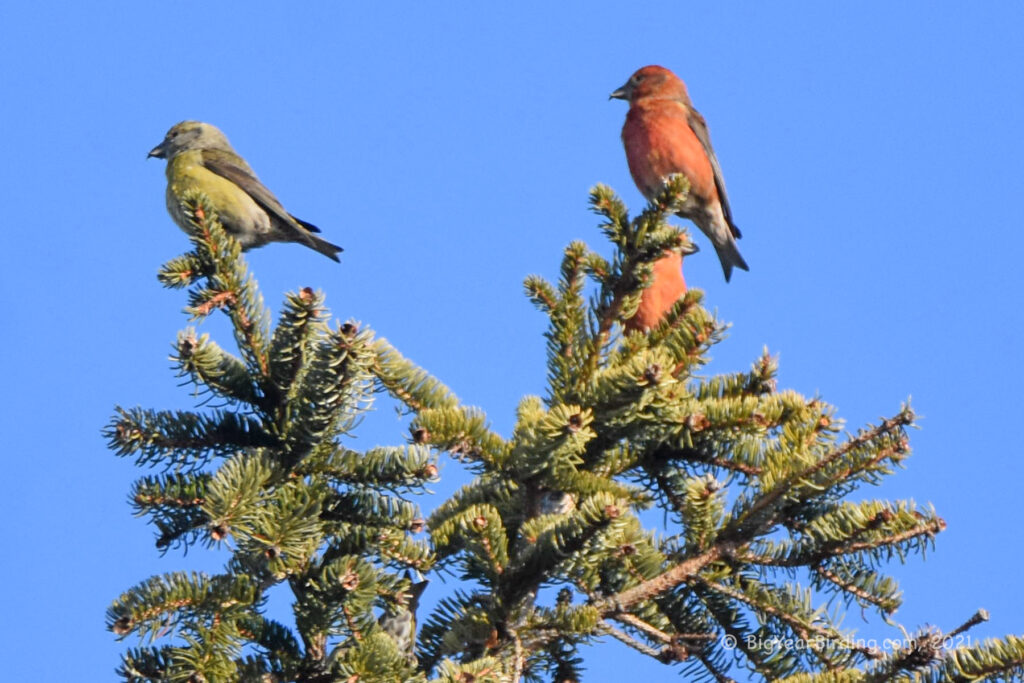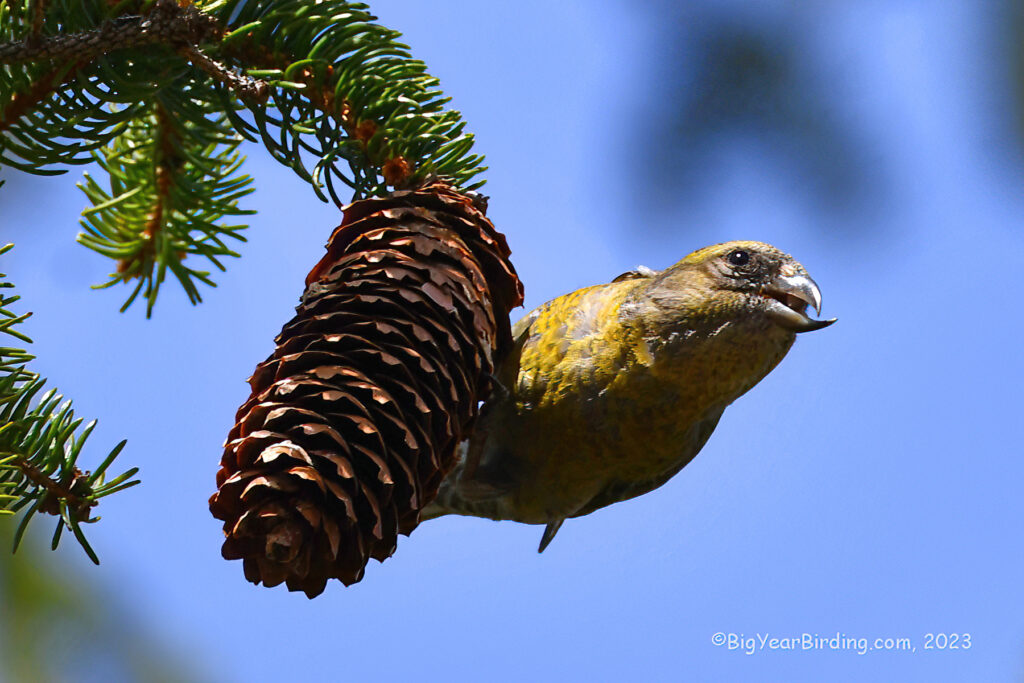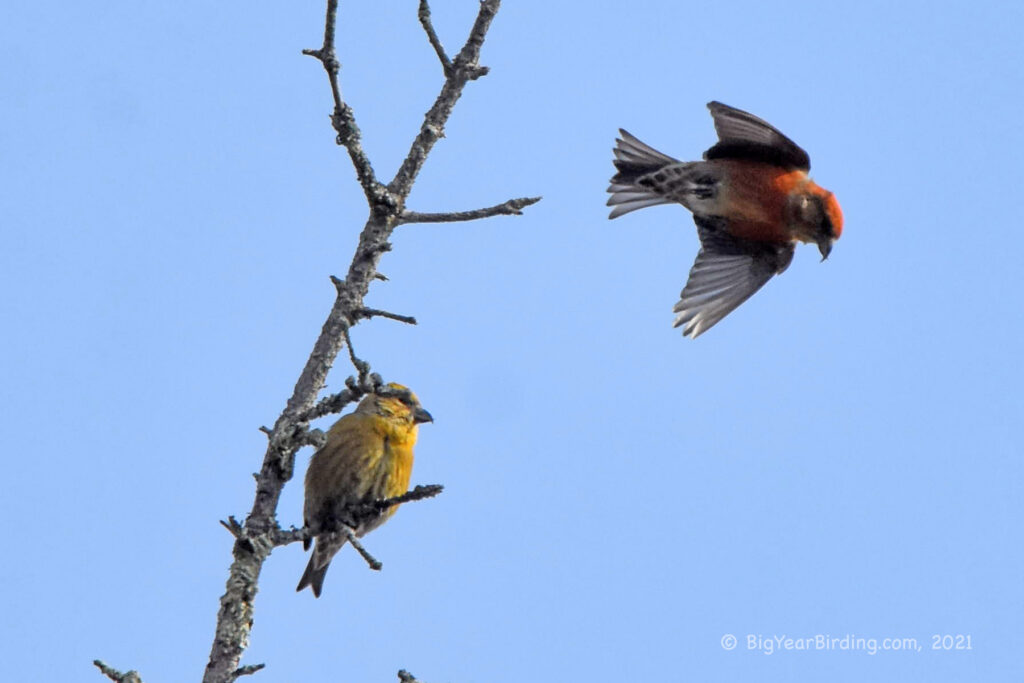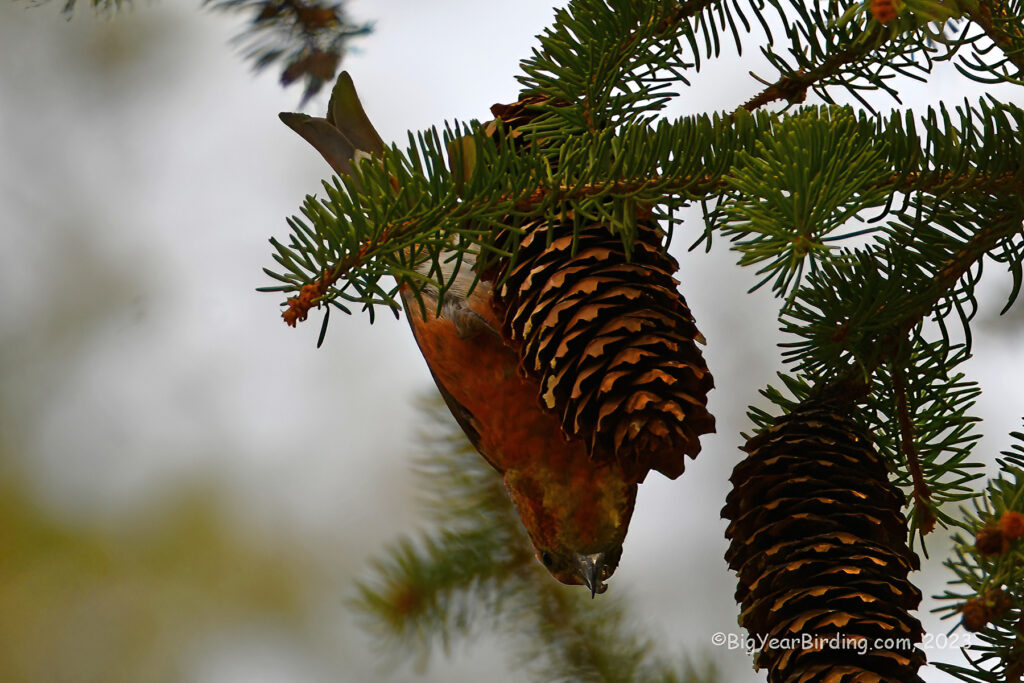
The Red Crossbill (Loxia curvirostra) is a unique finch species found across North America. The bird’s name is derived from the unique bill that crosses at the tips, allowing it to pry open conifer cones to access the seeds inside. The Red Crossbill is a medium-sized bird, measuring about 6.3-7.5 inches in length and weighing around 1-1.4 ounces. The male and female Red Crossbills have different plumage colors, with the male being a bright red or orange-red and the female having more muted green or yellow-green feathers.

One of the most distinguishing field marks of the Red Crossbill is their unique bill, which is thick and curved with crossed tips. This bill adaptation allows the bird to access conifer cones that other bird species cannot, as the crossed tips allow them to grip and twist the cone scales to pry them apart. The Red Crossbill’s plumage can vary in color and pattern, but they generally have a streaky brown or olive-green back, wings, and tail.
The Red Crossbill is a highly nomadic species, and their movements and migration patterns are closely linked to food availability, particularly the availability of conifer seeds. The birds can be found year-round across much of their range, but their distribution can shift rapidly in response to changing food sources. During years with poor conifer seed production, Red Crossbills may move to new areas in search of better feeding opportunities.
In terms of migration, the Red Crossbill is considered partially migratory. In general, populations at higher latitudes tend to be more migratory, with birds moving south in the fall and returning north in the spring. However, many individuals will remain in their breeding range year-round if food availability is sufficient. The birds tend to be found in conifer forests, particularly in areas with high densities of spruce, pine, or fir trees.

Overall, the Red Crossbill is a fascinating and unique bird species, with a specialized bill adaptation that allows it to access conifer seeds that other birds cannot. Their nomadic habits and migration patterns make them a fascinating species to study, and their presence in conifer forests across North America makes them an important part of the ecosystem.

